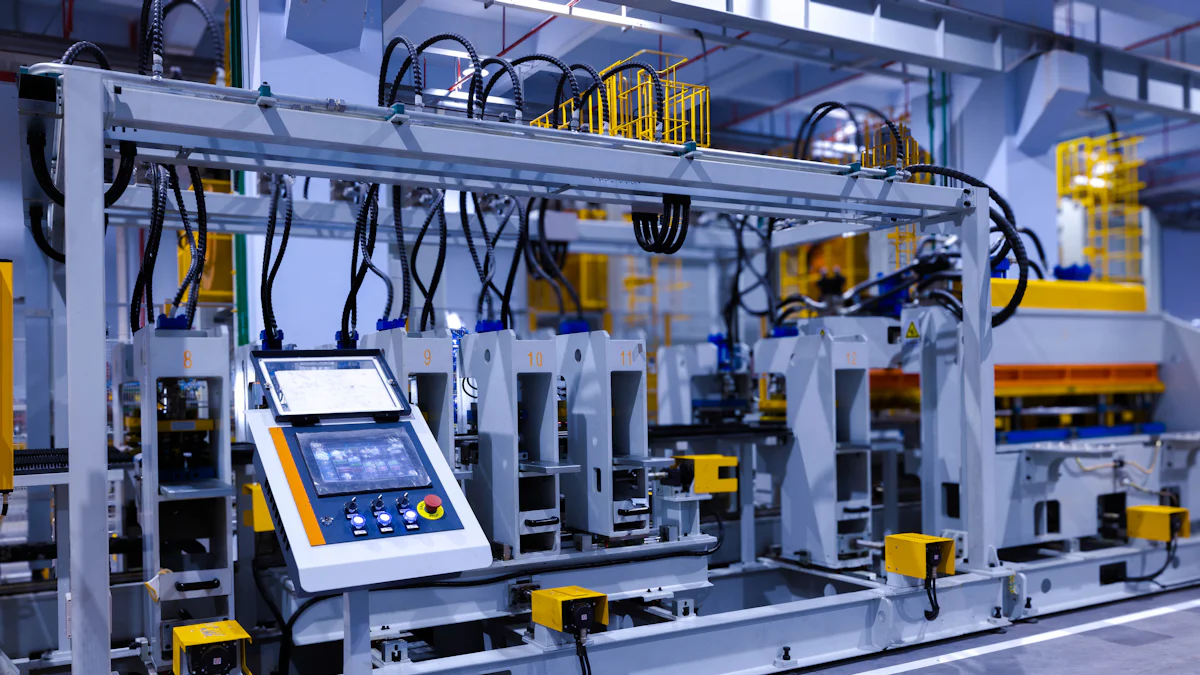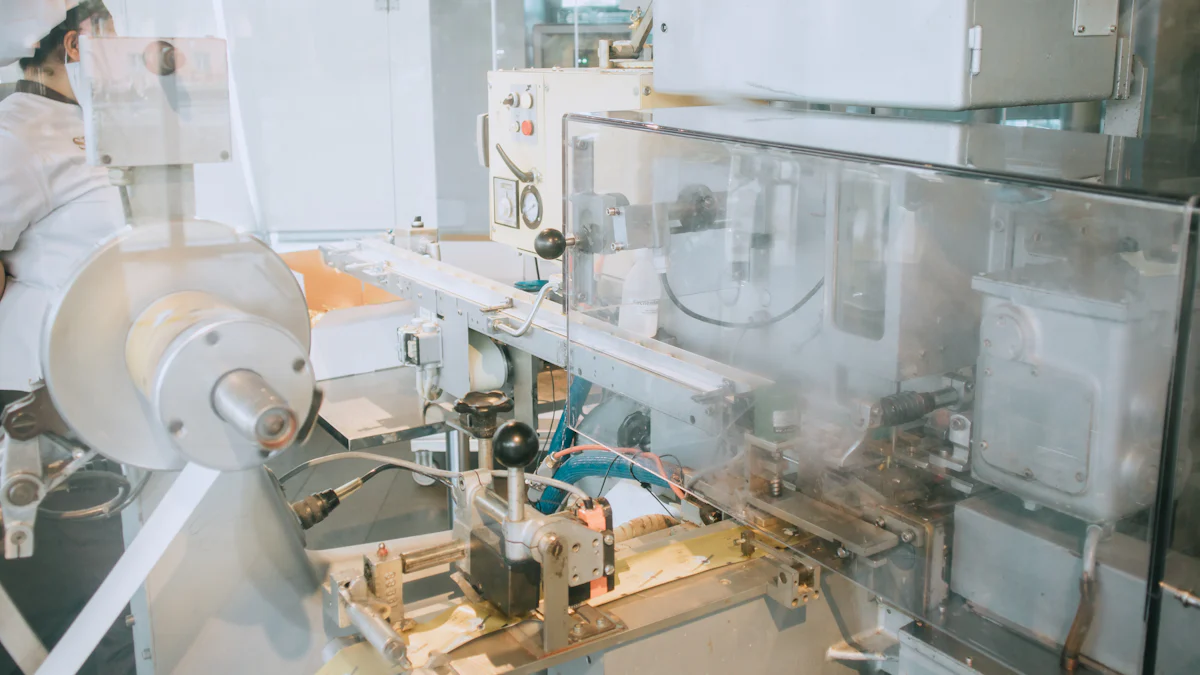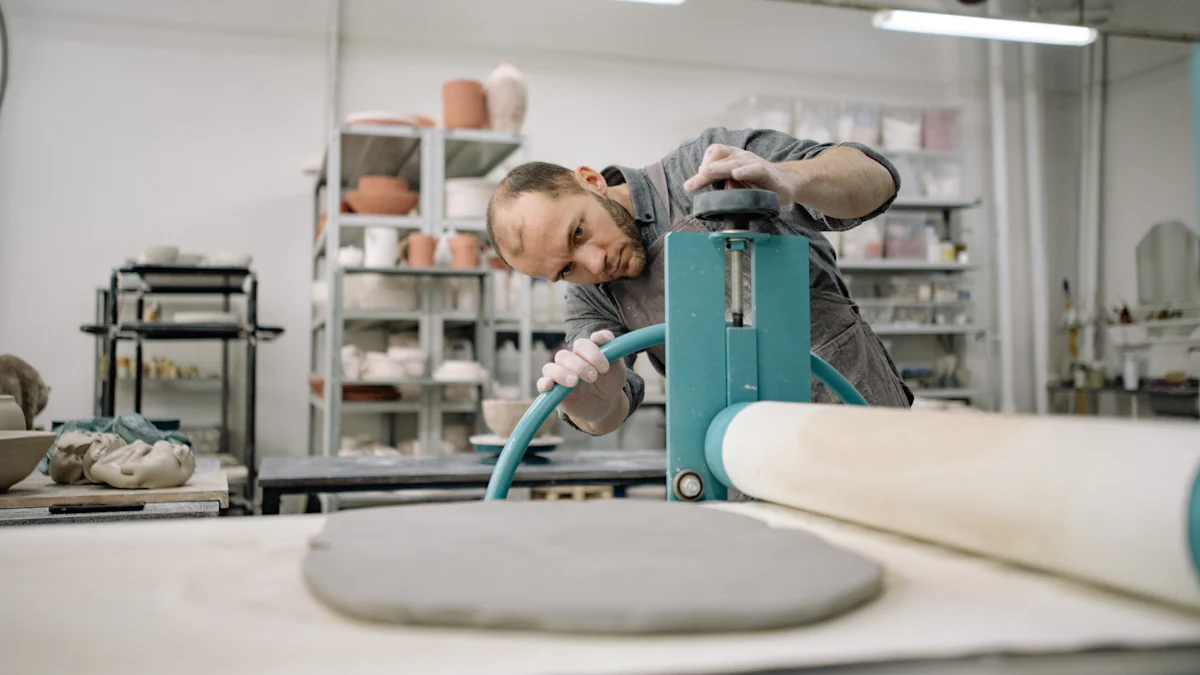
An injection molding machine helps you create plastic products by injecting molten material into a mold. This machine plays a vital role in manufacturing industries. It ensures precision and consistency, making it ideal for producing high-quality plastic parts used in automotive, medical, and consumer goods. Its efficiency saves time and reduces waste.
Key Takeaways
- Injection molding machines make plastic parts by pushing melted material into molds. This process ensures accuracy and uniformity.
- The process has four steps: clamping, injection, cooling, and ejection. Each step is important for making strong products.
- Picking the right machine—hydraulic, electric, or hybrid—depends on what you need. This includes the size of the part and saving energy.
How Injection Molding Machines Work

The Injection Molding Process
An injection molding machine operates by transforming raw plastic materials into finished products. The process begins with feeding plastic pellets or granules into the machine’s hopper. These materials are heated until they melt into a liquid state. The molten plastic is then injected into a mold cavity under high pressure. Once the material cools and solidifies, the mold opens, and the final product is ejected. This process ensures precision and consistency, making it ideal for mass production.
Key Steps in the Operation
You can break the operation of an injection molding machine into four main steps:
- Clamping: The machine secures the mold in place using a clamping unit. This ensures the mold stays closed during injection.
- Injection: The machine injects molten plastic into the mold cavity at high pressure.
- Cooling: The plastic cools and hardens inside the mold. Cooling time depends on the material and part thickness.
- Ejection: The machine ejects the solidified part from the mold using ejector pins or plates.
Each step plays a critical role in producing high-quality parts.
Materials Used in Injection Molding
You can use a variety of materials in injection molding, depending on the product’s requirements. Common materials include thermoplastics like polypropylene, polyethylene, and polystyrene. These materials are popular for their durability and flexibility. Engineering plastics, such as ABS and polycarbonate, are used for more demanding applications. Some machines also handle thermosetting plastics and elastomers, expanding their versatility.
Components of an Injection Molding Machine

Understanding the components of an injection molding machine helps you grasp how it operates and produces precise plastic parts. Each part plays a specific role in the process.
Injection Unit
The injection unit melts and injects the plastic material into the mold. It consists of a hopper, a barrel, and a screw. The hopper holds the raw plastic pellets. The barrel heats the material until it melts, while the screw pushes the molten plastic forward. You can adjust the temperature and pressure settings to suit different materials and product requirements.
Clamping Unit
The clamping unit holds the mold in place during the injection process. It applies force to keep the mold closed, preventing leaks or defects. This unit includes a stationary platen, a moving platen, and a clamping mechanism. The clamping force ensures the mold stays secure until the plastic cools and solidifies.
Mold
The mold shapes the final product. It consists of two halves: the cavity and the core. The cavity forms the outer surface, while the core shapes the interior. Molds are typically made from steel or aluminum for durability. You can customize molds to create products of various sizes and designs.
Control System
The control system acts as the brain of the injection molding machine. It allows you to monitor and adjust parameters like temperature, pressure, and cycle time. Modern machines often feature digital interfaces, making it easier to achieve precision and consistency.
Tip: Regularly calibrate the control system to maintain accuracy and efficiency.
Auxiliary Equipment
Auxiliary equipment supports the main components. Cooling systems help solidify the plastic quickly. Material feeders ensure a steady supply of raw materials. Hydraulic systems power the machine’s movements. These tools enhance the machine’s performance and reduce downtime.
By understanding these components, you can optimize the operation of an injection molding machine and produce high-quality parts efficiently.
Types of Injection Molding Machines
Hydraulic Injection Molding Machines
Hydraulic injection molding machines rely on hydraulic systems to power their movements. These machines use hydraulic cylinders to generate the force needed for clamping and injection. You can count on them for their high clamping force, making them ideal for producing large or heavy parts. Hydraulic machines have been around for decades and are known for their durability. However, they consume more energy compared to other types.
Electric Injection Molding Machines
Electric injection molding machines use electric motors instead of hydraulics. These machines offer precise control over movements, which helps you achieve consistent results. They operate quietly and consume less energy, making them environmentally friendly. Electric machines work well for small to medium-sized parts that require high precision. While they cost more upfront, their energy efficiency can save you money in the long run.
Hybrid Injection Molding Machines
Hybrid injection molding machines combine the best features of hydraulic and electric systems. They use hydraulics for clamping and electric motors for injection. This combination gives you the power of hydraulic machines and the precision of electric ones. Hybrids are versatile and work well for a wide range of applications. They also strike a balance between energy efficiency and performance.
Advantages and Disadvantages of Each Type
| Type of Machine | Advantages | Disadvantages |
|---|---|---|
| Hydraulic | High clamping force, durable | High energy consumption, noisy |
| Electric | Precise, energy-efficient, quiet | High initial cost, limited clamping force |
| Hybrid | Versatile, balanced energy efficiency | More complex, higher maintenance costs |
Choosing the right injection molding machine depends on your production needs. Consider factors like part size, precision, and energy efficiency when making your decision.
An injection molding machine transforms raw materials into precise plastic parts. You’ve learned how it works, its key components, and the types available. Understanding these machines helps you improve manufacturing efficiency and reduce costs. Always evaluate your production needs before choosing or maintaining one. This ensures better results and long-term success.
FAQ
What industries use injection molding machines?
Injection molding machines are widely used in industries like automotive, medical, electronics, and consumer goods. They help produce precise, durable, and high-quality plastic parts.
How do you choose the right injection molding machine?
Consider factors like part size, material type, production volume, and energy efficiency. Match the machine’s capabilities to your specific manufacturing needs.
Tip: Evaluate long-term costs, including maintenance and energy consumption, before making a decision.
Can you use recycled materials in injection molding?
Yes, many machines can process recycled plastics. Using recycled materials reduces waste and supports sustainable manufacturing practices.
♻️ Note: Ensure the recycled material meets quality standards for your product.
Post time: Feb-05-2025